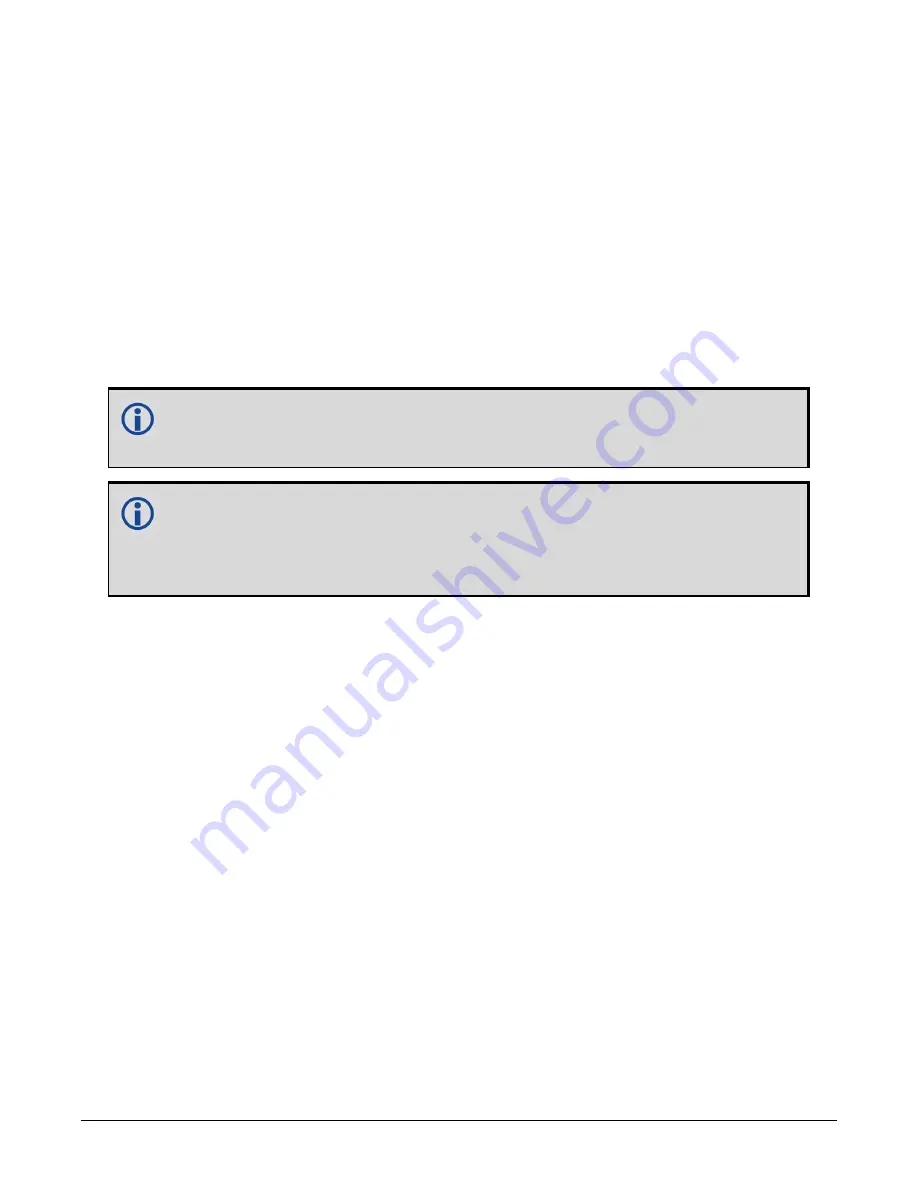
OEM7 Installation and Operation User Manual v4
100
Chapter 6
CAN Bus
The OEM7 receivers support the following CAN protocols:
l
J1939 Transport and Extended Transport Protocol: used for corrections and NovAtel mes-
sages (both transmitting and receiving)
l
NMEA2000: used for standard as well as NovAtel-proprietary messages (transmitting only)
By default, CAN is disabled on OEM7 receivers. Critical CAN configuration parameters such as
Parameter Group Numbers (PGNs), addresses and priorities are system-specific and must be
explicitly configured.
The addresses and PGNs are typically allocated when the overall CAN bus topology is determ-
ined. Because the OEM7 receiver can operate on 2 CAN buses concurrently, it can run 0, 1 or 2
CAN Nodes. A Node has a unique CAN J1939 NAME and address.
There are no CAN transceivers on the OEM7 receiver cards. These cards require
external CAN transceivers and proper bus terminations. See
on page 218 for an example of a CAN transceiver circuit.
On the OEM719, CAN1 is multiplexed with user VARF and EVENT2, so the following
commands must be issued before enabling CAN1:
FREQUENCYOUT DISABLE
MARKCONTROL MARK2 DISABLE
Refer to
on page 178 and
on page 202 for
pin-out information.
OEM7 receivers support the following NMEA2000 Parameter Group Messages (PGN) over the
CAN bus:
l
PGN 126992 System Time
l
PGN 129025 GNSS Position Rapid Update
l
PGN 129026 COG & SOG Rapid Update
l
PGN 129027 Position Delta High Precision Rapid Update
l
PGN 129029 GNSS Position
l
PGN 129551 GNSS Differential Signal
The following commands and logs are used for CAN configuration:
l
CANCONFIG
command: controls the CAN transceiver hardware and places the receiver
on
bus
or
off bus
l
J1939CONFIG
command: assigns the CAN J1939 NAME and address parameters to a Node
l
J1939STATUS
log: reports the status a Node on the J1939 CAN network, such as the
claimed address
l
LOG CCOMx PGNabcd
: configures the NMEA2000 messages















































